KLC Architects Guide to a ground floor extension
Thinking of extending your home?
With this guide, you can carry home extension projects in England with ease. Also, the basic steps to follow when setting up an extension would be stated here to avoid issues before, during, and after the completion of the project.
Having a ground floor extension is an amazing project for homeowners, and the most important step is obtaining planning permission, permitted development rights, and building regulations before construction.
KLC Architects have assisted numerous homeowners each year when it comes to extending their homes. This guide will assist you before embarking on your ground floor extension project, and improve the functionality and design of your building by addition of a study, to kitchen expansion
Reasons for building a ground floor extension
Ground floor extensions not only create room for extra space, but they are flexible in numerous ways too, depending on your tastes makes it a popular project for most homeowners when increasing the value of their building. Extensions are built by retaining the original structure of the building, creating an extra bedroom with/without an ensuite, providing a more open kitchen, dining, and living area, and receiving a wonderful view of the garden.
Choosing your extension.
When considering an extension to your home, a lot of factors have to be put in place before the onset of the project. Firstly, what type of extension would be suitable for your home?
Lots of designs are available to homeowners, and KLC Architects can assist you in developing a design that is right for your home and its cost you can handle in order for fast completion with ease of the project.
Planning Permission or Permitted Development?
Planning Approval is the initial step to take after selecting the type ground floor extension design, and before commencing the project. Planning Approval is obtained from your Local Authority as either a Planning permission or by utilizing your Permitted development rights. What permitted development rights or obtaining a certificate of lawfulness?
Permitted Development Rights, provides homeowners consent for extension and improvement projects to be carried out without the need of acquiring planning permission. set up by the Government, if your single-story passes through these requirements then it qualifies for an extension.
- The planned extension takes up less than 50% or below of the land around the original house (“original” being the latest of when the property was built or if it was built before 1948, then as it stood on 1st July 1948)
- Building materials of the original house should be alike with the planned improvements materials.
- Buildings situated along highways, should project either a side or rear extension, as it is the best for the particular residence, extension shouldn’t go beyond the initial structure elevation.
- Projected eaves and ridges shouldn’t be higher than original building.
- Extension should fall between 3m or less than the original boundary if within 2m.
Projected eaves and ridge no higher than the original building.If you have checked the Planning Portal or the legislation and you are still unsure about whether or not your proposal requires planning permission or is permitted development then you may seek formal confirmation by appointing KLC Architects who can apply for an application for a certificate of lawful development or use.
To enable the commencement of your project, experienced Architects such as KLC Architects should be employed on the onset to plan the project for it to meet all criteria enlisted in a planning development right rule.
For more details on the rules see the Planning Portal.
Appointing us as the Architect
Once you’ve made your decision, the first thing to do is to discuss and agree on the scope and cost of Architectural services before any work starts. It is important that this agreement is in writing, setting out the services to be provided and outlining the obligations of each party. For smaller projects the agreement may be set out in a self-contained letter of appointment that outlines the obligations of both parties
Lawful Development Certificate.
Similar to a planning application, the application for submission of a lawful development certificate is much less likely to face rejection. The process still takes approx. 8-10 weeks for a decision and Documents provided should be
- An application form
- Evidence verifying the information within the application (including architectural plans, elevations, and sections)
- A site location plan and block plan
- A fee
This process typically takes 8-10 weeks, and this certificate can be applied before you start the work or after it is finished. You can either manage this process yourself or have KLC Architects act as your planning agent do it on your behalf. If you do not make this type of application, complete the work and the council subsequently determines that permission was required, the planning enforcement team may request you make an application for retrospective permission or restore the land or buildings to their former KLC Architects can liaise this certification process with the Local Authority.
Applying for planning permission.
Planning permission can be applied for when permitted development rights don’t apply or you are looking to build a larger extension outside the rules of permitted development. Though this application is time-consuming, as it may take a period of minimum 8-10weeks for a decision, and a planning officer would be assigned to the application. The information to be provided for planning permission is similar to permitted development certification requirements, however more comprehensive and sometimes requires more documents and consultants to be appointed. Which include;
- the layout of the original building,
- traffic safety,
- Noise and disturbance,
- nature conservation,
- design and appearance of the proposed extension,
- materials to be used,
- effect on neighbours’ privacy,
- limitation on neighbours’ access to light,
- historical importance,
- waste disposal etc.
Planning permission approval isn’t restricted to these requirements alone.
After submission, the council decides on the application, and a decision will be made concerning your application. The decision will be either “REFUSED” or “APPROVED”, all depends on if your application meets the requirements. Some planning officers can request minor amendments to make in order to achieve a positive outcome decision before it’s approved.
What’s next if my planning application is denied?
If your application for planning permission is denied, there’s no need to be overwhelmed, simply brace yourself and use the case officer’s report with what needs to be changed within the design and resubmit. You could have a conversation with your council officer for a clearer explanation of what to do when reconstructing your plans.
A withdrawal and re-application of permission can be applied within a period of 12months from the application date. A re-application usually is a free go without additional statutory fees (provided it is with 12 months of the date of the decision and the Local Authority is to confirm)


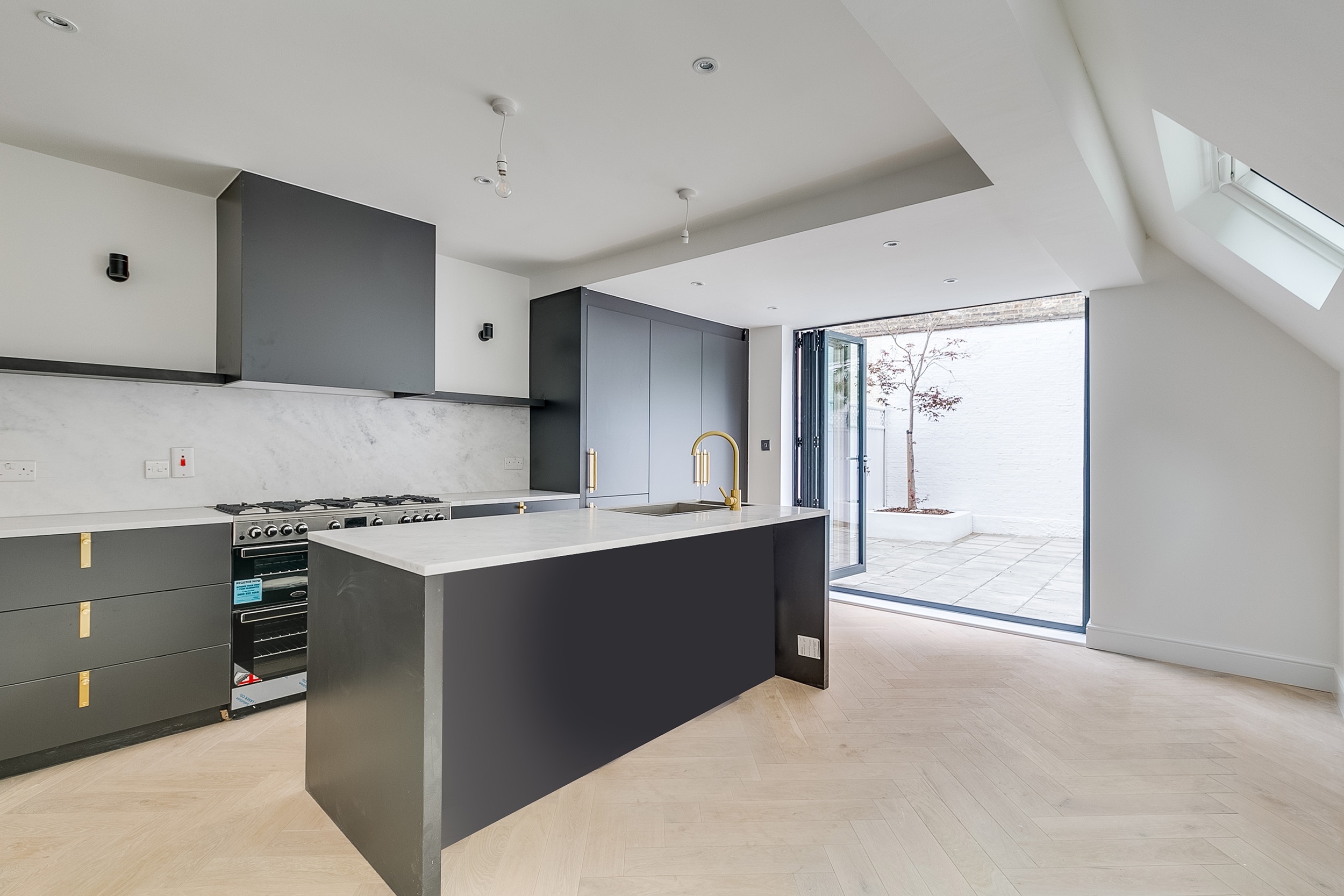
How much will my extension cost?
Homeowners should always write out their project budget before the commencement and stick to it to avoid expenses getting off hand.
Here is a rough estimate that could help in budget setting.
Ground floor extensions typically cost between £1,500 and £2,000 per m2 – though this can go higher in London and the South East. You also have to consider the areas to be refurbished as a result of the works.
This roughly translates to around £40,000 – £60,000 for a 5m x 5m2 extension, but this doesn’t include those luxury touches, such as glass roofs, powder coated aluminium bi-fold doors, kitchens and more. In fact, your budget can vary wildly depending on a number of home factors and personal decisions.
Factors that would affect budget
Location of project
This is one factor that affects the cost of the contractors, for areas like London are usually higher as it is classified as urban areas of the country, while areas like North England costs are far cheaper.
Size of the extension
As time spent is a factor which equals more money, the more complex the project, the more time spent on design.
Choice of materials
Choice of materials to be used would have a major influence on budget, as larger extension per meter square will include more materials to be purchased. Glazing materials for extensions is a good idea as its relevance would be seen at the long run. The cost for glazing materials would increase your project budget as they are quite expensive to purchase.
Legal fee
Legal fees regulate and constrains how developments are carried out during the commencement of the project. Such additional legal fees are that of Party Wall Surveyors anywhere between £800 – £1500+ when alterations are being made to a wall shared with a neighbor, a Party Wall Award is produced for extension within 3-6m of the neighboring foundations, built on the line of junction and any Party Structure affected. Typically, the homeowner conducting the works will need to seek advice from or appoint a Party Wall Surveyor.
Structural work
Structural Engineering is a specialist profession and liaised with during the planning stages and how the structure of the original building will be affected. Purchasing materials for extension can exceed the budget due to inflation of prices, the most expensive structural materials still remains glazing, using it for floating corners, glass roofs, floor to ceiling glazing. KLC Architects work with trusted Structural Engineers during the Building Regulations stages of the project and liaison with the contractors and Building control Inspectors.

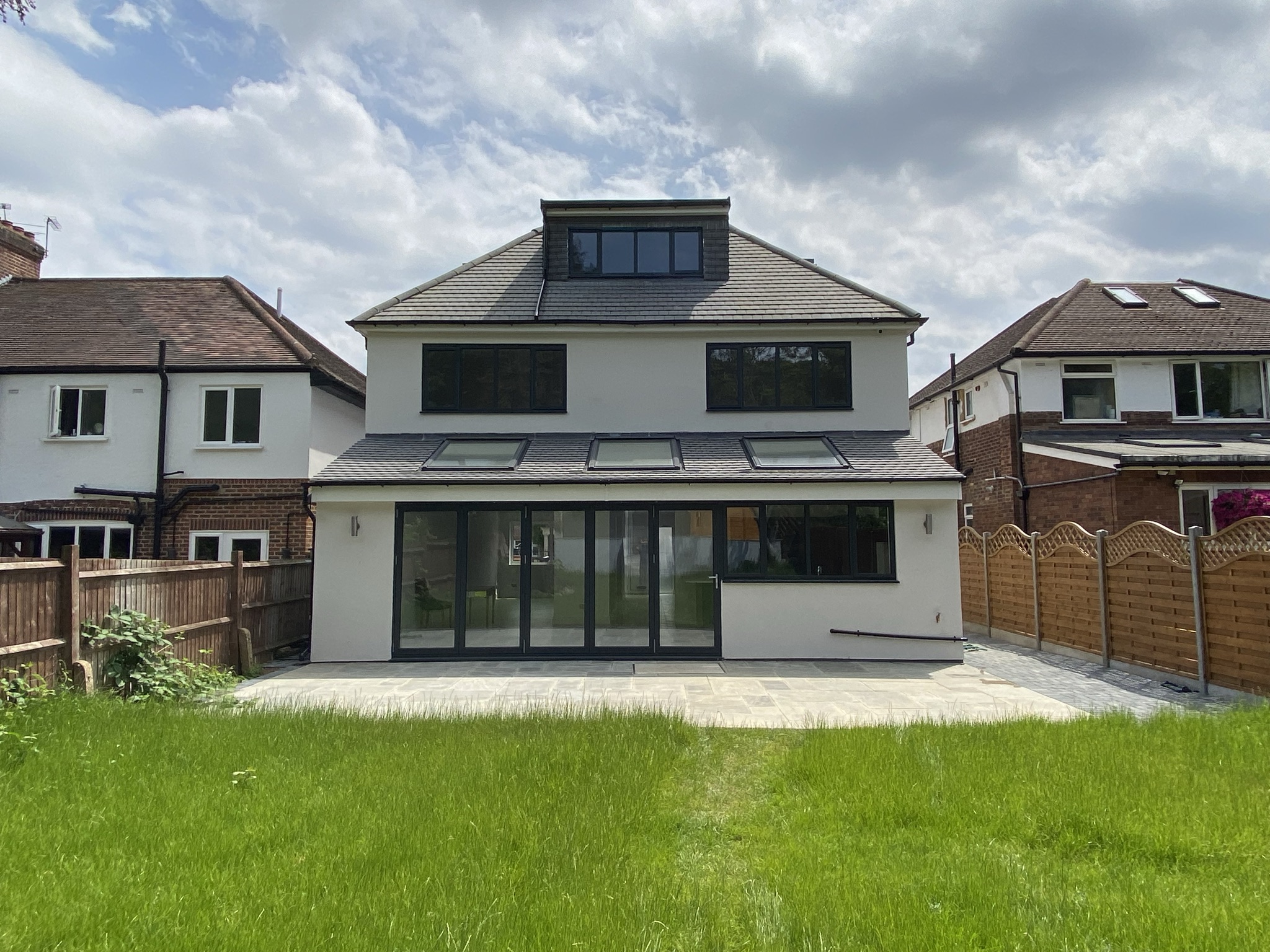
How much value can a ground floor extension add?
Constructing an extension to your building would add value with stylish designs, size, quality, and also creates room for extra space either for a dining room kitchen, bathroom, or an extra room from earlier unused spaces, as estate agents and potential buyers sees a ground floor extension as an added advantage.
Accentuating your extension with glazing is an extra and is best for luxurious taste.
You might be considering limiting the budget to get huge gains during construction, but this might reduce the quality of space and construction. KLC Architects produce drawing plans, and seek out the best builders for your extension building. Building a quality extension is your number one goal, as anything poorly built devalues the home.
Before improving your home, make an inquiry with a good estate agent in the area, to have an idea if the area is being affected by ceiling prices.
Measuring your home
Produce a survey of the original building, and the space available for an extension, which can be commissioned through a measurement survey company or even by KLC Architects.
Design
By working with KLC Architects we will create floor plans, detail designs, furniture and bathroom layouts with 3D models and Virtual Reality tours to see how your building would stand out before staring works or submitting a planning application., 3D models can also be considered.
Check out for drains:
Before setting out your project, a CCTV drainage survey should be conducted in-order to investigate drainage routes to prevent damage around your extension works, and if there is an important wastepipe with connections, make an arrangement with the water board
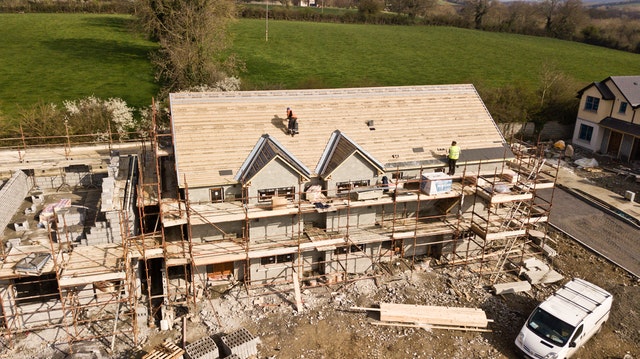
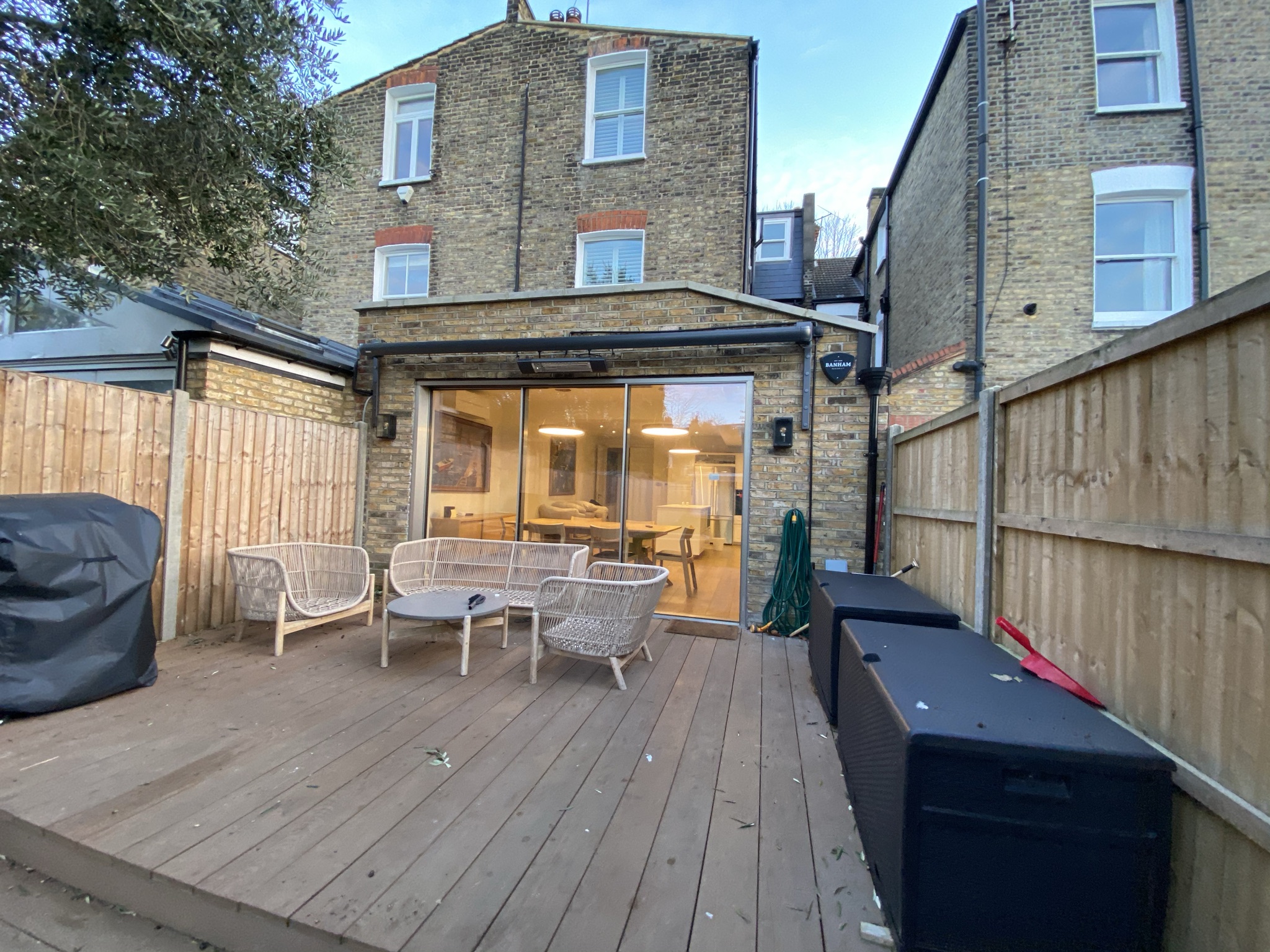
Statutory Requirements
Planning
Obtaining Planning permission is the first and crucial stage to have at hand for a starting works to your proposed extension as outlined either via obtaining a Certificate of lawfully development or Planning permission.
Party walls
If your extension involves creating a boundary or a party wall that might affect neighbors, you’ll need to serve notice of your intentions to build on a party wall. They’ll need to give approval, otherwise you’ll need to negotiate a party wall agreement.
Building regulations
This must be obtained and meet requirements with building regulations, the approval would include site visits at different times during the construction phase.
Building Regulations are national standards to control building work. They are set by the Government in order to protect health, safety, welfare, access and conservation of energy. Building Control officers are locally based independent, publicly accountable, quality assured service with close links to the London Fire Brigade, and the council’s Planning, Environmental Health and Highways sections. They have a comprehensive understanding of the borough and a large archive of property history, which enables us to provide a thorough, cost effective service.
They aim to
- Respond to telephone calls within one working day.
- Respond to letters within fifteen working days.
- Examine all plans within fifteen working days.
- Issue Completion Certificates on all projects.
- Provide advice on local ground conditions
- Suggest amendments to overcome difficulties in complying with the requirements of the Regulations. Provide qualified staff with extensive local knowledge.
- Deal with enquiries in a helpful and courteous manner Provide advice on access and facilities for people with disabilities.
- Provide advice on the provisions for means of escape in case of fire.
- Provide advice on thermal insulation and energy conservation Provide advice on safety of sports grounds
Tendering
The architectural design by KLC Architects is submitted to the building regulation department at which point getting quotes from different contractors, and agreeing on timelines and payment plans are set out. The process of obtaining quotes from different contractors, and agreeing on timelines and payment plans will help prospective contractors put together more accurate prices
Construction/ Project management
So, you have appointed your contractor, obtained Building Control approved and secured the Party Wall Awards, works can now begin. it’s advisable to employ a professional for project supervision. KLC Architects can project manage the works and any defects and problems arising on site can detected by us the professional project manager and corrected immediately by the contractor.
Fit out
Adding finishing touches to your property can be done at a little expense with interior designing, as it is a great way to add style your home. All these changes made on the kitchen or floor gives the home a new dimensional look.
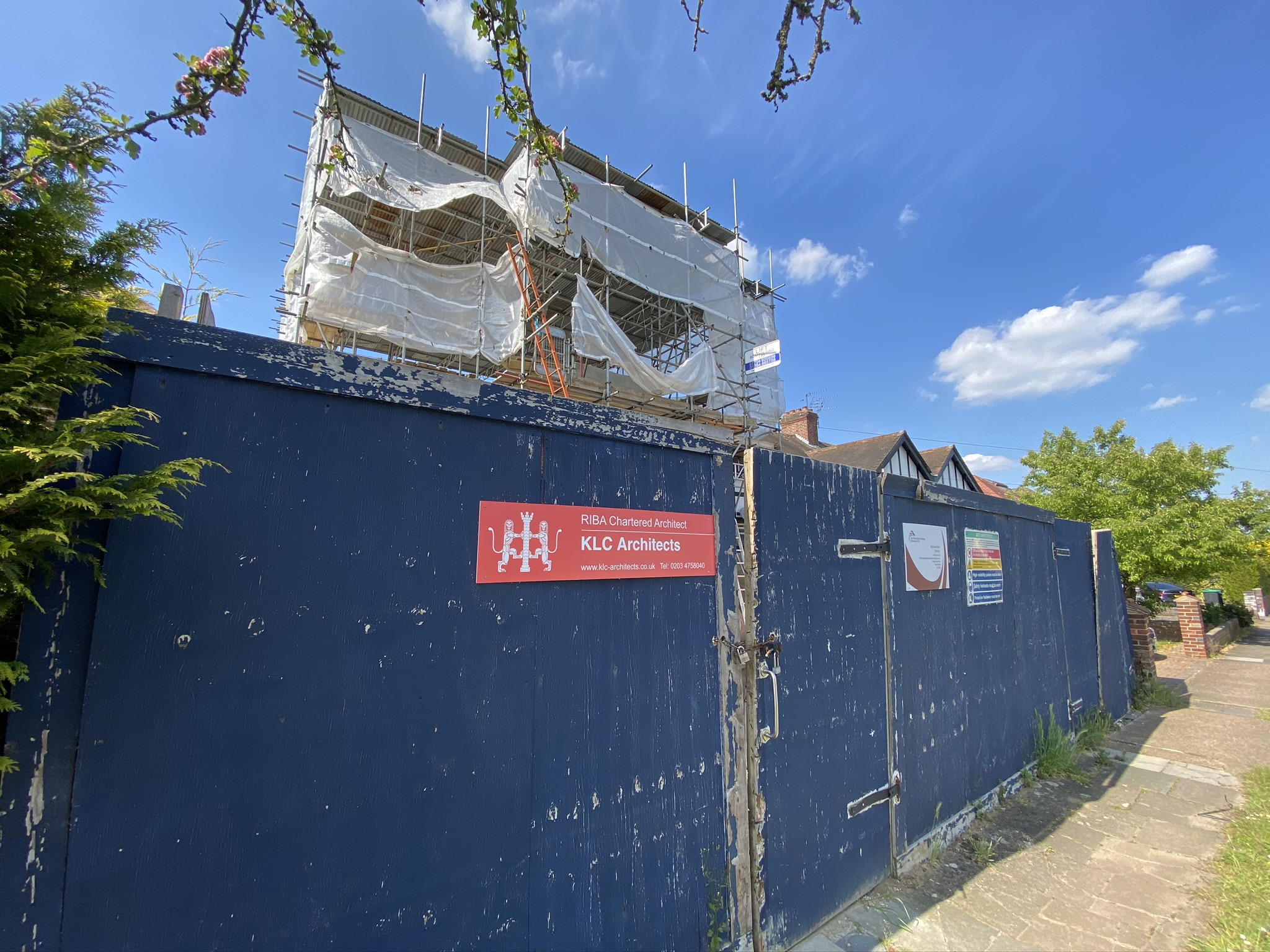

Picking the right professionals
Getting the right contractor, would provide you with a quality result, less stress, and the completion of your dream project with ease. KLC Architects have worked with a handful of Contractors invited during the Tender stages. Here are tips on how to hire the suitable professional in the construction market.
Shop around
Approach different professional contractors and making your choice from the selected options is a good start. A choice from 3 is a good number to pick the best out from.
Check references
Speak to the contractors past client about the outcome of their project, if it was finished at satisfactory standard, if any problem occurred during the course of construction, if the project was completed on the homeowner’s budget, was it completed on time as agreed. You can request to visit the contactors past client to have a view and make your decision.
Experience
Simply appointing a contractor by recommendation isn’t always the key factor. Research their experience on the type of extension you are undertaking and the finished quality. The more experience they have, the more likely they are to avoid red flags.
Selecting the right contractor
The rise of cowboy builders has put a lot of homeowners at risk financially by selecting a wrong contractor. When selecting a contractor, a good place to start would be;
Is your builder FMB accredited?
The FMB (The Federation of Master Builders) is the largest trade body, accredited to small- or large-scale builders in UK, by approval. Employing a builder with an FMB accreditation is set to adhere to conduct guidelines as all professionals within this trade body are ranked as the best builders in UK, FMB accreditation assure the homeowners.
Protect against builders going bust
Developer Insolvency Insurance can be used to insure your works to be at a safer side if anything goes wrong with the builder. As most builders can be incompetent cowboys, applying for bankruptcy provides them a chance in setting up another construction company as they could put a new director at the wheel, but the construction company is still very much operated by them which would still be very much unsafe for homeowners.
Another option that could protect your finances is making a payment to the contractor with a credit card. The credit card offers valuable benefits such as protection against contractor fraud, screwed up projects by contractors, and return protection for compensating of loss if a service wasn’t delivered. All these benefits fall under Section 75 of the Consumer Credit Act. A payment of more than £100 and less than £30,000 would have to be made for all these benefits, as it is the suitable for protection against small construction projects
Know what payment plan keeps you safe
A reputable builder, wouldn’t ask for an upfront payment for the whole works. He should be able to complete the project with an initial agreed deposit made by the homeowner and get that money back when various stages of the works have been completed. Any builder who demands an upfront payment a possibly risk of going bust or completing pending works with a different customer. We at KLC Architects would advise a payment plan of employing a builder who can fund the entire project, or a deposit can be made, and project plan with key milestones agreed based on valuations upto project completion. KLC Architects can be employed to oversee the project for errors and immediate correction if you have little or no knowledge of extension projects. As this payment plan, would make the builder deliver quality and at the right time.
If you wish to project manage yourself, then that’s fine. Have a JCT homeowners’ contract which allows you to pay the contractor in stages rather than upfront, but is limited to your own basic knowledge as no professional would be there to supervise the project or you might end up paying money at the wrong time and for work that’s not of a good quality.In conclusion avoiding all this expected issue which comes with an extension project can be limited with the help of a project manager, though expensive to hire, but expect your project to be completed no time and budget.

KLC Architects have a comprehensive portfolio of work, which we aim to update on a regular basis to give you a feel of the diverse range of work being commissioned and completed.
We have worked with a number of Local Authorities across the country and in particular, have a great deal of experience working with all the London Authorities.
We liaise with the Planning Officer and Conservation Officer and other parties to make the process as smooth as possible in obtaining the required permissions and statutory requirements

architecture
KLC Architects can provide services to submit applications from;
- New Builds
- Extensions
- Renovations
- Re-modeling

design
Typical types of permissions include Full Planning Permission, Certificate of Lawful Use or Development, Listed Buildings Consent, & Conservation Area Consent from

Project Management
We prepare drawings and submit applications to the Local Authority’s Planning Department to obtain permission.